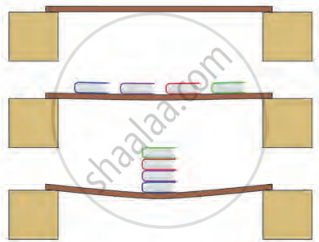Topics
Living World and Classification of Microbes
Health and Diseases
Force and Pressure
- Force
- Types of Force: Contact Force
- Types of Force: Non-Contact Force
- Balanced and Unbalanced Forces
- Inertia and Mass
- Types of Inertia
- Thrust and Pressure
- Pressure on Solids
- Pressure of liquid
- Gas Pressure
- Atmospheric Pressure
- Buoyancy Force (Upthrust Force)
- Archimedes Principle
- Density of substance and Relative density
Current Electricity and Magnetism
Inside the Atom
Composition of Matter
- Matter (Substance)
- Characteristics of Particles (Molecules) of Matter
- States of Matter
- The Solid State
- The Liquid State
- The Gaseous State
- Elements
- Types of Element: Metals
- Types of Element: Non-metal
- Type of Element: Metalloid
- Compound
- Types of Compound
- Mixture
- Types of Mixtures
- Solution
- Suspension Solution
- Colloidal Solution
- Molecular Formula of Compounds
- Valency
Metals and Nonmetals
- Types of Element: Metals
- Physical Properties of Metals
- Chemical Properties of Metal
- Types of Element: Non-metal
- Physical Properties of Non-metal
- Types of Element: Non-metal
- Chemical Properties of Non-metal
- Type of Element: Metalloid
- Uses of metals and nonmetals
- Nobel Metal
- Purity of Gold
- Corrosion of Metals
- Alloy
Pollution
- Pollution and Its Types
- Air Pollution and Its Causes
- Effects of Air Pollution
- Prevention of Air Pollution
- Water Pollution and Its Causes
- Effects of Water Pollution
- Prevention of Water Pollution
- Soil Pollution and its Causes
- Effects of Soil Pollution
- Prevention of Soil Pollution
- Relationship of Soil Pollution with Air and Water Pollution
- Laws for Control, Regulation, and Prevention of Pollution by Indian Government
Disaster Management
Cell and Cell Organelles
- Cell: Structural and Functional Unit of Life
- Prokaryotic and Eukaryotic Cell
- Plant Cell and Animal Cell
- Structure of the Cell
- Cell Wall - “Supporter and Protector”
- Plasma Membrane
- Cytoplasm - “Area of Movement”
- Nucleus - “Brain” of the Cell
- Endoplasmic Reticulum (ER)
- Golgi Apparatus - "The delivery system of the cell"
- Lysosome - “Suicidal Bag”
- Mitochondria - “Power House of the Cell”
- Plastids
- Non-living Substances Or Cell Inclusion
Human Body and Organ System
- Human Body
- Human Organ System
- Mechanism of respiration-Breathing
- Human Respiratory System
- Blood Circulatory System in Human
- Human Heart
- Blood Vessels
- Circulation of Blood in the Heart (Functioning of Heart)
- Heart Beat - Heart Sounds "LUBB" and "DUP"
- Blood
- Composition of Blood: Plasma (The Liquid Portion of Blood)
- Composition of Blood: Red Blood Cells (Erythrocytes)
- Composition of Blood: White Blood Cells (Leukocytes)
- Composition of Blood: Blood Platelets (Thrombocytes)
- Functions of Blood
- Blood Transfusion and Blood Groups (ABO and Rh system)
- Blood Pressure (B.P.)
- Heart Related Conditions
Introduction to Acid and Base
Chemical Change and Chemical Bond
Measurement and Effects of Heat
Sound
Reflection of Light
Man Made Materials
Ecosystems
Life Cycle of Stars
- Introduction
- Pressure on Solids
Introduction:
Pressure is the force applied on an object per unit area. In everyday life, we experience pressure in many ways. For instance, when we place a weight on a solid surface, pressure is created at the point of contact between the object and the surface. Air pressure is the force exerted by the weight of air molecules pressing down on all objects around us. Even though we don’t feel it, air pressure acts on every object in all directions because air surrounds us.
Pressure on Solids:
When a weight (like a book or a heavy object) is placed on a solid surface (like a table), it applies force downward due to gravity. This force creates pressure at the point where the weight touches the surface.
Factors Affecting Pressure on Solids,
- Value of the Weight (Force): An increase in the weight of an object results in a greater force exerted on the surface. Heavier objects apply more pressure.
- Contact Area: Smaller contact areas (like a nail) exert higher pressure on the surface. Larger contact areas (like a flat board) distribute the force, resulting in lower pressure.

Force and Pressure
If you would like to contribute notes or other learning material, please submit them using the button below.
